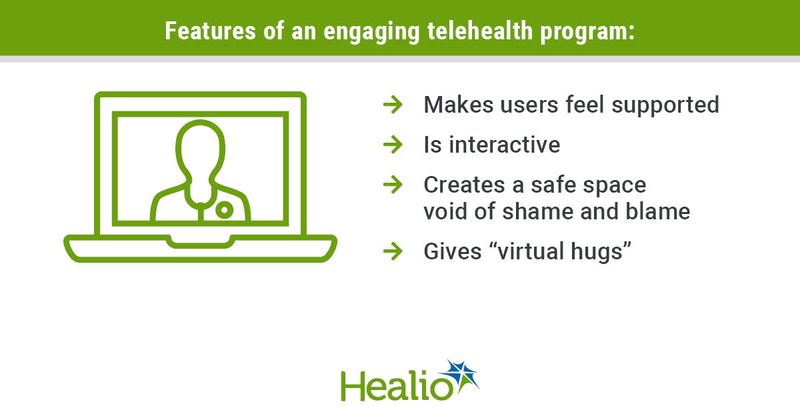Telehealth strategies to increase access, profitability for DSMES programs
Any diabetes self-management education support program can and should develop a telehealth component for the benefit of the member patients and for the future of the community and industry, according to a speaker.

Effective diabetes education programs can decrease hospitalizations, amputations and other complications resulting from uncontrolled diabetes, yet less than 7% of people diagnosed with diabetes get diabetes self-management education and support (DSMES) services, Tony Song, CEO of Diabetes Care Partners, said during a virtual presentation at the Association of Diabetes Care & Education Specialists Annual Conference. Telehealth offers an opportunity to reach people with diabetes in a new way — and that opportunity should be used beyond the COVID-19 pandemic, he said.

“We hope that our message resonates so that programs across the country see what is possible and do not prematurely abandon telehealth options when and if we get back to ‘normal,’” Song told Healio. “It is not enough to take current programs and convert them online. I wish it was that easy. If a program already receives low engagement, attendance and outcomes for an online version will not perform much better, and, in fact, may perform worse.”
The Diabetes Care Partners’ Discovering Diabetes telehealth program, a partnership with health plans such as L.A. Care Health Plan and Bright Health Plan, expanded in 2019 to include L.A. Care’s Family Resource Centers and designated clinics across California to provide access to more than 30 remote sites and in-home programs and 900 miles of coverage. Not every DSMES program will grow that large, nor should they, Song said. Instead, diabetes care and education specialists can increase engagement for any size DSMES program — and develop a more profitable model — by reevaluating the current processes, systems and curricula to optimize the members’ experience.
“Then test, evaluate, modify and re-test using data,” Song told Healio.
Song highlighted key questions diabetes specialists should consider to create an engaging and welcoming DSMES telehealth program that keeps members coming back:
- How does your program make them feel? A patient who might, as an example, express interest in starting an over-the-counter supplement recommended by a friend should not be made to feel discounted, but validated, Song said. “Do you say, ‘I wouldn’t waste your time; I haven’t seen any evidence supplements work. Just continue on your medications,’” Song said. “Or do you say, ‘That is interesting, I haven’t seen many supplements that help, but I would like to know more about it. First, check with your doctor and if you decide to take it, make sure to test you blood sugars to make sure it is really working. I wouldn’t want you to pay for something that doesn’t work.’ Do you see the difference? Does it feel like you are a part of their support, or are you there to tell them what to do? This contributes to how they feel about you and your program.”
- Is it interactive or didactic? Song said DSMES telehealth programs that “don’t have laughter in the program” must go back to the drawing board and take steps to make sure they are not boring. “I would say most programs I have seen are just about the information and a pure data dump on the patient, but in many cases it is not the fault of the program,” Song said. “It is all they know, and it’s the way diabetes education has always been done. The problem is people do not learn this way.”
- Does your program create a safe space void of shame and blame? The last thing a patient wants to experience is to be told they are a “bad diabetic,” Song said. “When we first meet a patient, we say, ‘When you eat cookies, how do you adjust your insulin?’ The person is usually taken aback and will say, ‘I can’t have cookies.’ That person may now want to hear more, because you are not looking at the person as a disease, but as a real person, just like you and me, who likes to eat cookies but is pancreatically disadvantaged.”
- Does your program give “virtual hugs?” A combination of supportive language, humor and validation through telehealth can create the same welcoming environment that an in-person experience can provide, Song said. “I am sure most of you are huggers and love to hug your patients when seeing them in person,” Song said. “[Telehealth] is the same hug, just virtually.”
“What we forget is that the virtual member is in essence the same as the in-person member; they both have the same needs, doubt, fear, confusion and, in many instances, shame living with diabetes,” Song told Healio. “These core beliefs need to be addressed whether virtual or in-person, and DSMES must still be provided during this pandemic, as studies have shown that COVID-19 outcomes may have a correlation with blood glucose levels. The most important thing we can do as a program is to be obsessed with the members’ experience to make it as enjoyable, fun, interactive and frictionless as possible.”

